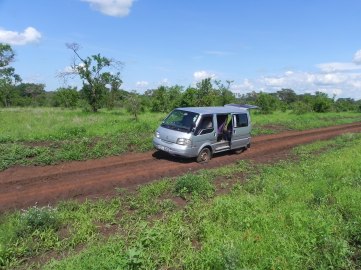Meru National Park is in Kenya located at Meru, about 350 km from Nairobi. Covering an area of 870 sq.km. This is one of the best known National Park in Kenya.
The road to Meru National park is not in good condition. In some places there were rocks all over the road. There are no groceries/shops to buy food near the National Park. Hence, you have to be preparing yourself in advance for arranging food, beverages and drinking water.
We all can remember the film “Born Free”. Born Free was a bestselling novel written by Joy Adamson. It was a true story of how Adamson raised an orphan lioness cub named Elsa. In 1956, Joy’s husband George shot Elsa’s mother. Later Joy decided to raise the young lions themselves. Elsa survived several years at Meru National Park and reared three cubs before dying in 1961. We all know that Elsa’s grave is at Meru National Park, but it is sad to say that visitors are not taken see her grave.
The park is un-crowded. It is very worth to visit when there is no crowd at a wild park. Meru is an ideal park for the photographs to snap some good memorable photos. I chose this park to visit twice, within a short period, since I like to have experience with new adventures in each trip.
But take extra careful about your vehicle that travelling inside park. The picture below shows my experience. We got flat tire in side Meru National Park and there was no any spare wheel.

Before travelling check the availability of spare wheel. My advice is to have at least two spare wheels.
We wasted almost 4 hours at this place. However, we were lucky to get help from the Kenyan Special Task Force Officers who were in duty at the park. We give our gratefulness to the officers who helped us.

Also make sure about your Park Guide. My experience is the Guide provided by the Meru National Park to us had not much knowledge about the park and the animals/birds. Also in both occasions we had to wait about an hour at the park gate to get a Guide for our safari.
We really enjoyed our time at Meru National Park. We were able to see lot of animals and birds. See my photographs the animals are seems to be used to vehicles.If you keep driving you’ll find lots of variety and things to see.

















